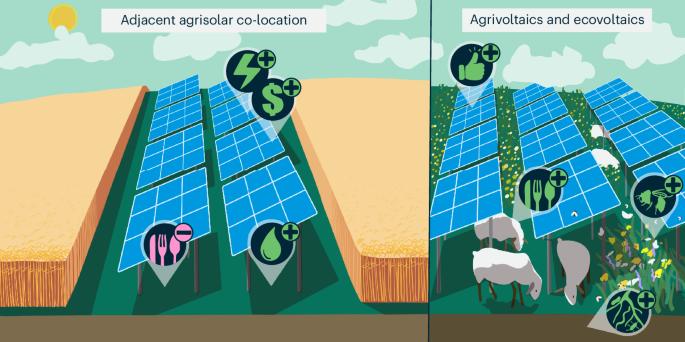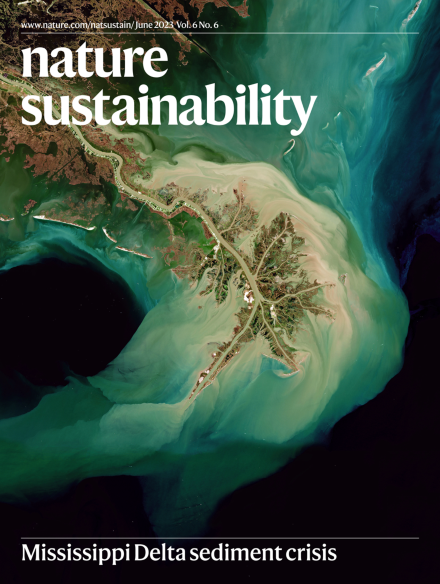农业太阳能共配置对粮食-能源-水关系和经济安全的影响
IF 27.1
1区 环境科学与生态学
Q1 ENVIRONMENTAL SCIENCES
引用次数: 0
摘要
了解太阳能光伏装置如何影响景观及其关键资源对于实现可持续的净零能源生产至关重要。为了加强这种理解,我们研究了将农田转换为太阳能光伏装置的后果,我们称之为“agrisolar”共址。我们对横跨加州中央山谷的925个阵列(2.53 GWp,覆盖3,930公顷)的农业太阳能共址抵消的农业产出进行了粮食、能源、水和经济影响分析。我们发现,农业太阳能共存取代了粮食生产,但增加了农民的经济安全和水的可持续性。鉴于太阳能光伏在全球范围内前所未有的扩张速度,这些结果突出了对农业和太阳能光伏共同选址决策的多方面结果的更深入理解的必要性。该分析着眼于在农业用地上安装太阳能电池阵列的影响和结果,发现这些“农业太阳能”项目可以取代粮食生产,但同时提供经济安全并抵消用水。本文章由计算机程序翻译,如有差异,请以英文原文为准。

Impacts of agrisolar co-location on the food–energy–water nexus and economic security
Understanding how solar PV installations affect the landscape and its critical resources is crucial to achieve sustainable net-zero energy production. To enhance this understanding, we investigate the consequences of converting agricultural fields to solar photovoltaic installations, which we refer to as ‘agrisolar’ co-location. We present a food, energy, water and economic impact analysis of agricultural output offset by agrisolar co-location for 925 arrays (2.53 GWp covering 3,930 ha) spanning the California Central Valley. We find that agrisolar co-location displaces food production but increases economic security and water sustainability for farmers. Given the unprecedented pace of solar PV expansion globally, these results highlight the need for a deeper understanding of the multifaceted outcomes of agricultural and solar PV co-location decisions. This analysis looks at the impacts and outcomes from installing solar arrays on agricultural land, finding that these ‘agrisolar’ projects can displace food production but simultaneously provide economic security and offset water use.
求助全文
通过发布文献求助,成功后即可免费获取论文全文。
去求助
来源期刊

Nature Sustainability
Energy-Renewable Energy, Sustainability and the Environment
CiteScore
41.90
自引率
1.10%
发文量
159
期刊介绍:
Nature Sustainability aims to facilitate cross-disciplinary dialogues and bring together research fields that contribute to understanding how we organize our lives in a finite world and the impacts of our actions.
Nature Sustainability will not only publish fundamental research but also significant investigations into policies and solutions for ensuring human well-being now and in the future.Its ultimate goal is to address the greatest challenges of our time.
 求助内容:
求助内容: 应助结果提醒方式:
应助结果提醒方式:


